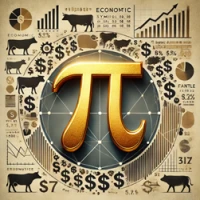Illuminating the value of technical research

On behalf of a commodity producer organization, WPI evaluated the outputs from a project that featured a $5 million investment into technical research over multiple years. WPI’s team captured the results of this extensive effort and synthesized them for presentation to the organization’s governing board; among the findings uncovered and presented for the first time was the development of genomic traits proven, via rigorous testing, to provide crop yield advantages of 50 percent or more to U.S. farmers in times of drought. Capturing measurable results from long-term efforts can be challenging. Educating clients on the dynamics of success measurement when quantifiable results are not readily available requires deep client-consultant collaboration and an ability to consider both near- and long-term client aspirations with market/policy dynamics – attributes that WPI brings to every consulting engagement.

 Beef packer margins reversed sharply lower last week, swinging back into negative territory after six straight weeks of positive returns. Margins fell $145/head to –$75 as fed cattle prices rebounded $7/cwt (live basis), while the Choice cutout slipped nearly $7/cwt. The rapid compression...
Beef packer margins reversed sharply lower last week, swinging back into negative territory after six straight weeks of positive returns. Margins fell $145/head to –$75 as fed cattle prices rebounded $7/cwt (live basis), while the Choice cutout slipped nearly $7/cwt. The rapid compression...
 Each year, the Chinese zodiac calendar features one animal to mark and typify the coming 365 days. If that process were applied to CBOT trade, Tuesday would have been the “day of the bear”, with all major grain markets ending in the red. The only specific trigger was the bearish NOP...
Each year, the Chinese zodiac calendar features one animal to mark and typify the coming 365 days. If that process were applied to CBOT trade, Tuesday would have been the “day of the bear”, with all major grain markets ending in the red. The only specific trigger was the bearish NOP...
 The U.S. 2025/26 sugar supply is forecast at 14.119 million short tons, raw value (STRV), down 1,800 STRV from November as the decrease in expected imports of refined organic and specialty sugar, which pays the high tier, out of quota duty, more than offsets the increase in beginning stocks and...
The U.S. 2025/26 sugar supply is forecast at 14.119 million short tons, raw value (STRV), down 1,800 STRV from November as the decrease in expected imports of refined organic and specialty sugar, which pays the high tier, out of quota duty, more than offsets the increase in beginning stocks and...